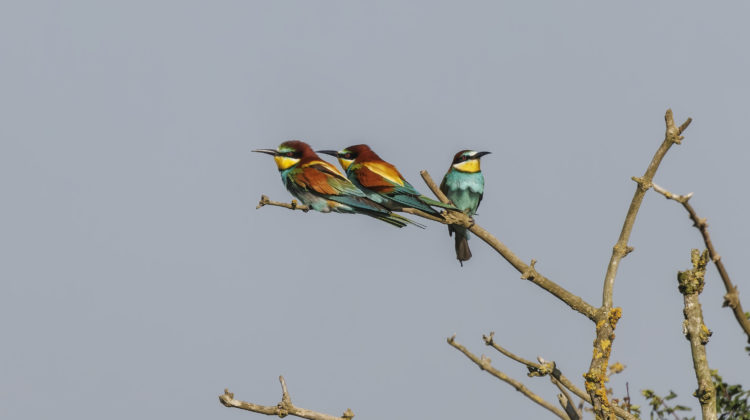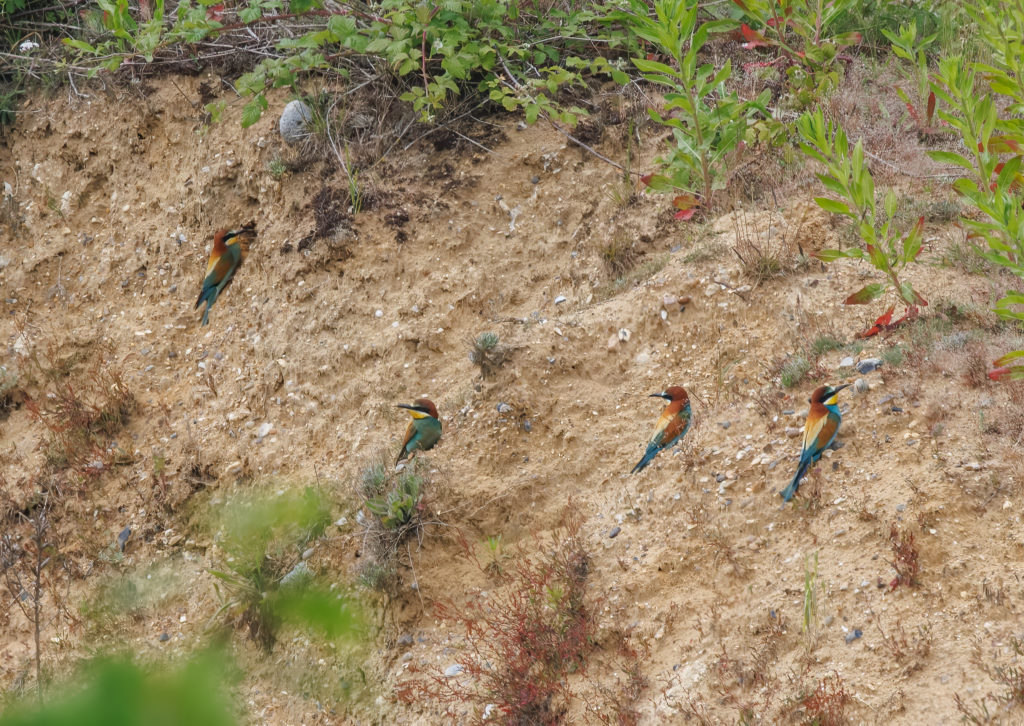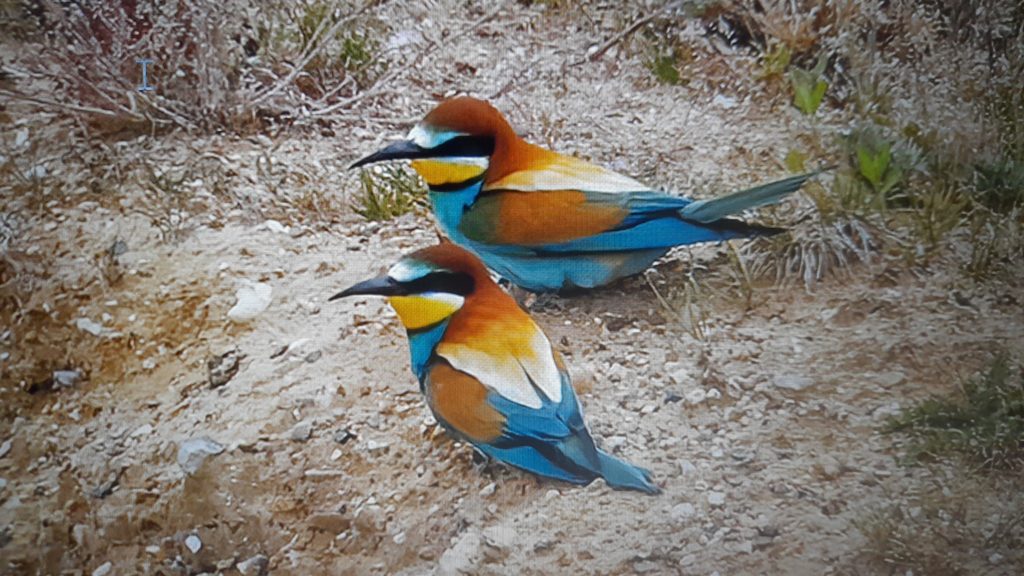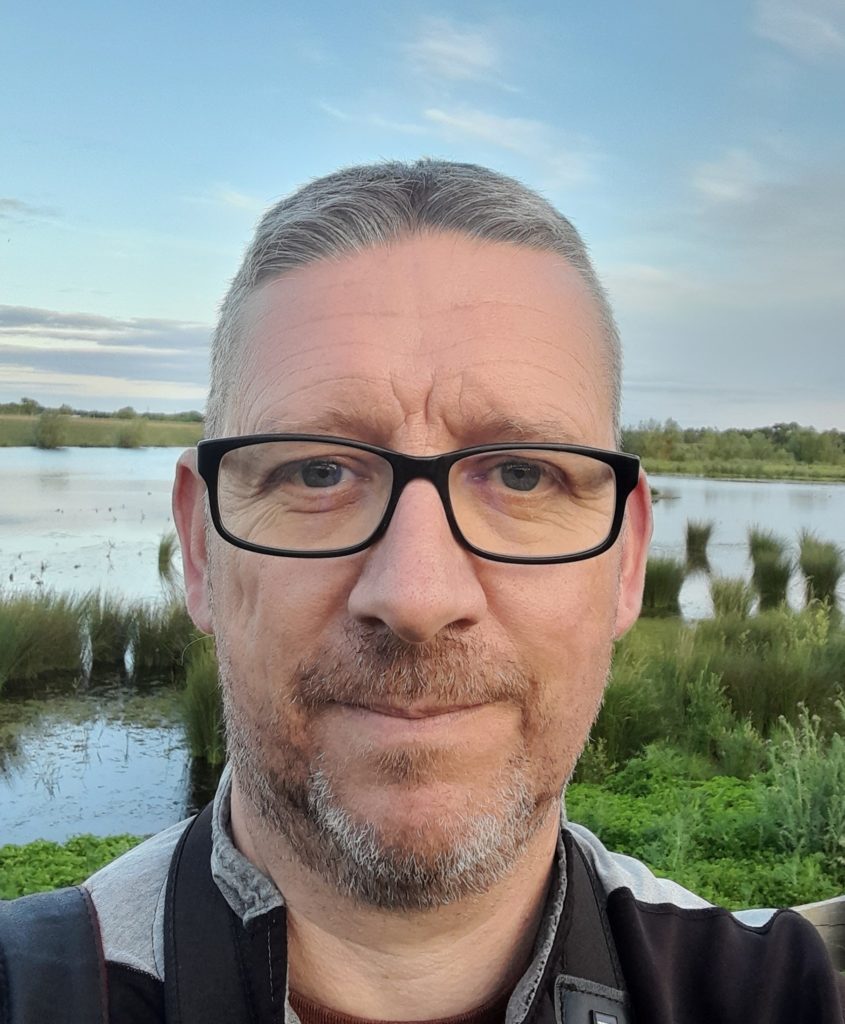
These colourful creatures been described as ‘the most exciting birds you can see in the UK right now’ by the RSPB – and they are attempting to breed in Norfolk. Bird photographer Mike Edgecombe has been lucky enough to capture the seven rare ‘rainbow birds’ on camera
If you saw Springwatch on BBC Two last night, you might have spotted Mike Edgecombe’s photo of the ‘rainbow birds’, or bee-eaters, which have set up summer home in Norfolk, thousands of miles from home. The bird photographer has travelled around over the world with his camera – from New Zealand to the Indonesian jungle. But these latest sightings have turned his attentions much closer to home.
The brightly-coloured birds – rare visitors from southern Europe and northern Africa – were found by local birdwatcher, Andy Chamberlain, over the Jubilee Weekend and have since been seen making nest burrows in a small quarry at Trimingham, near Cromer.

About the size of a starling, bee-eaters can be identified by their red backs, blue bellies and yellow throats. As well as bees, they feed on dragonflies and other flying insects, which they catch in mid-air. With beautiful flutey-calls to match their vibrant colours, they are an unmistakable visitor to have arrived in Norfolk.

The RSPB is closely monitoring the breeding attempt, and is working together with North East Norfolk Bird Club to enable everyone to enjoy the sight of these magnificently coloured birds from a safe distance so as to ensure the birds have the best chance at nesting. ‘I’ve been involved with the monitoring of the site since the birds were found by Alan Chamberlain, helping out as a volunteer,’ says Mike.
He has been making the most of the fine weather to take the pictures. ‘It’s about being at the right place at the right time,’ he says.

‘The great thing about the site up at Cromer is the birds are fairly close and there’s a good viewing area,’ he says. ‘If you are lucky, they will fly up to a branch nearby.
‘All birds are interesting, but these is special because they are so rare, it’s the first breeding attempt in East Anglia – or in Norfolk, certainly.

‘It’s nice to have some good, exciting news about something,’ adds Mike, who is a member of the Oriental Bird Club council, which supports conservation work in the Oriental region by encouraging studies of birds and their habitats. He says of the so-called rainbow birds: ‘They are all colourful and they are all beautiful and the sort of bird that would attract the general public as well. They are a lot of people’s favourites, to be honest.’
Mark Thomas, Senior Investigator at the RSPB, says: ‘These seven bee-eaters are certainly the most colourful and exciting birds you can see in the UK right now. In 2017, thousands of people caught sight of the birds in Nottinghamshire, and we expect the same will happen again here in Norfolk.’

Mark adds: ‘While an incredible sight, we mustn’t forget that the arrival of these birds to our shores is due to changes to our climate and subsequent pressures on wildlife both here and across the globe. Pushed northwards by climate change, these exotic birds will likely become established summer visitors in the future, having been an early and unmissable sign in the past two decades that the nature and climate emergency has reached our shores.’
Ensuring the protection of these rare birds, the only ones breeding in the UK, is crucial if they are to raise youngsters. Having previously been rare visitors, this is now the sixth UK breeding attempt in the past 20 years.
Mike makes the point: ‘I doubt they will return to the site, as it’s never happened before in the UK – so this could very much be a one off and we may not see it happen again. It’s special for Norfolk.’
The seven bee-eaters are located to the east of a small quarry at Trimingham, near Cromer. The car park and viewing area can be found in a large grass field off Gimingham Road at TG284384. (What3words w3w.co/forklift.shuts.gravel). Car parking costs £5 to cover site monitoring. Visit RSPB.
Featured image picture credit: Mike Edgecombe









Hi.
I came to see the Bee Eaters last summer and what an amazing site it was to see them.
I tried to take some photographs of them but they were always to far away.
I am making enquiries to find out if there will be any where closer to photograph them this years under supervision. I do understand if this is not possible though.